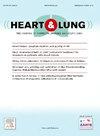Impact of lung resections on lung transplant grafts due to size discrepancy
IF 2.6
4区 医学
Q2 CARDIAC & CARDIOVASCULAR SYSTEMS
引用次数: 0
Abstract
Background
Lung transplantation (LT) is a well-established therapeutic option for patients with advanced respiratory diseases. However, the impact of size discrepancy between donor and recipient remains controversial.
Objective
This study aims to evaluate the impact of lung graft volume reduction due to size mismatch between donor and recipient.
Methods
A retrospective analysis was conducted at a single reference center, including all LT procedures performed between January 1, 2015, and July 30, 2024. Surgical protocols were reviewed, and the need for graft volume reduction was recorded. The decision to perform graft reduction was made intraoperatively by the lead surgeon.
Results
A total of 420 patients were included. Lung graft resection was performed in 14 cases (3.3 %). Patients requiring graft resection had longer operative times, prolonged intubation and ICU stays, and increased tracheostomy requirements. The donor-to-recipient predicted total lung capacity (pTLC) ratio was significantly higher among patients requiring resection. While 5-year survival was not significantly different, 1- and 3-year survival rates were worse for patients requiring resection.
Conclusion
Lung graft resection due to donor-recipient size discrepancy can be a viable option for suitable recipients, although it is associated with increased postoperative morbidity. Given the small sample size (14 patients), these findings should be interpreted cautiously, and larger studies are needed to confirm these results. Early referral to transplant centers and careful donor-recipient matching are crucial to minimize the need for graft resection and improve outcomes.
肺切除对肺移植物大小差异的影响
肺移植(LT)是晚期呼吸系统疾病患者公认的治疗选择。然而,供体和受体大小差异的影响仍存在争议。目的探讨供、受体尺寸不匹配对肺移植体积减小的影响。方法在单一参考中心进行回顾性分析,包括2015年1月1日至2024年7月30日期间进行的所有LT手术。回顾了手术方案,并记录了移植物体积缩小的需要。手术中移植物复位是由主刀医师决定的。结果共纳入420例患者。14例(3.3%)行肺移植切除术。需要移植物切除的患者手术时间更长,插管和ICU住院时间延长,气管切开术需求增加。在需要切除的患者中,供体与受体预测的总肺活量(pTLC)比明显更高。虽然5年生存率无显著差异,但需要切除的患者的1年和3年生存率更差。结论供体-受体大小差异导致的肺移植切除术是一种可行的选择,尽管它与术后发病率增加有关。考虑到样本量较小(14例患者),这些发现应谨慎解释,需要更大规模的研究来证实这些结果。早期转诊到移植中心和仔细的供体-受体匹配对于减少移植物切除的需要和改善预后至关重要。
本文章由计算机程序翻译,如有差异,请以英文原文为准。
求助全文
约1分钟内获得全文
求助全文
来源期刊

Heart & Lung
医学-呼吸系统
CiteScore
4.60
自引率
3.60%
发文量
184
审稿时长
35 days
期刊介绍:
Heart & Lung: The Journal of Cardiopulmonary and Acute Care, the official publication of The American Association of Heart Failure Nurses, presents original, peer-reviewed articles on techniques, advances, investigations, and observations related to the care of patients with acute and critical illness and patients with chronic cardiac or pulmonary disorders.
The Journal''s acute care articles focus on the care of hospitalized patients, including those in the critical and acute care settings. Because most patients who are hospitalized in acute and critical care settings have chronic conditions, we are also interested in the chronically critically ill, the care of patients with chronic cardiopulmonary disorders, their rehabilitation, and disease prevention. The Journal''s heart failure articles focus on all aspects of the care of patients with this condition. Manuscripts that are relevant to populations across the human lifespan are welcome.
 求助内容:
求助内容: 应助结果提醒方式:
应助结果提醒方式:


